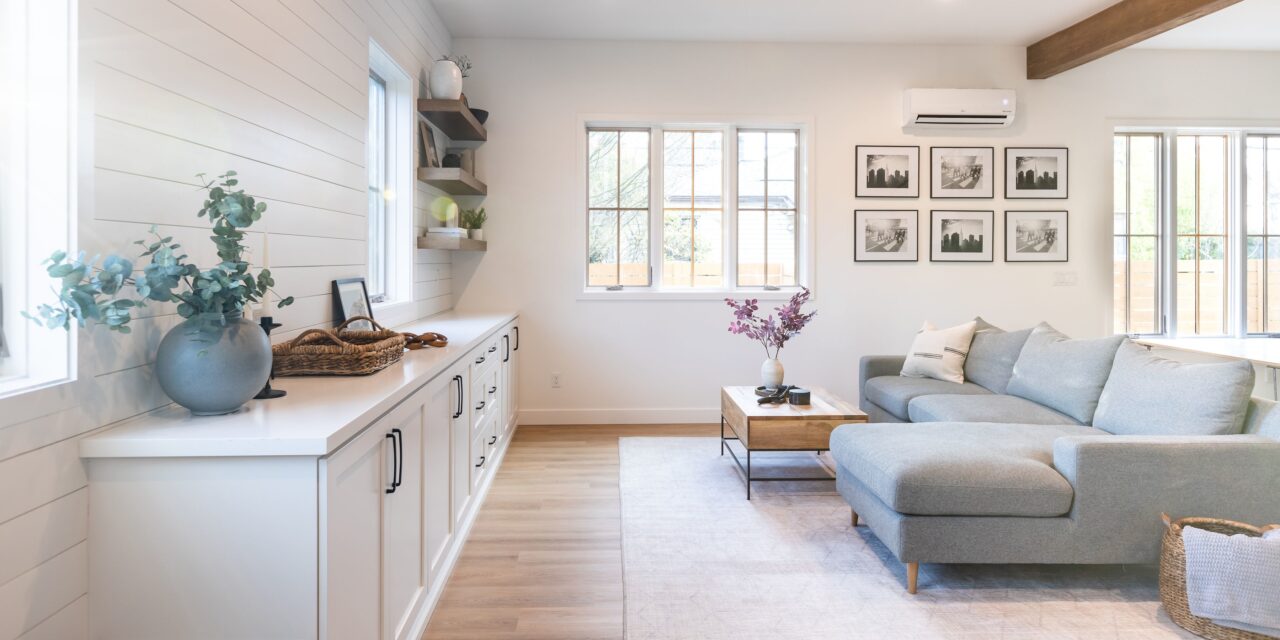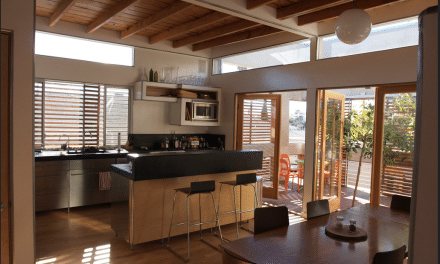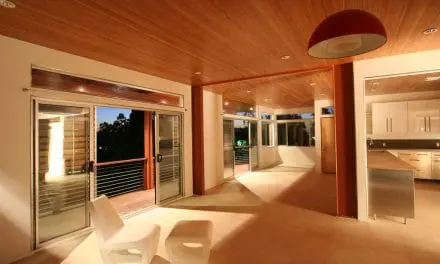Deltec home photo courtesy of Shelly Borga, Dakota & Co for Prefabulous Small Houses.
By Catherine Poslusny
Facing high interest rates and limited housing, many American homeowners are choosing to downsize. In her new book, ADUs: The Perfect Housing Solution, Sheri Koones explores small homes and accessory dwelling units. Building an ADU on an existing property offers a highly sustainable, cheaper-to-build alternative to apartments and traditional single-family homes.
Small houses and ADUs are typically cheaper to buy or rent than larger, traditionally built homes, and they’re far less expensive to maintain and operate. Downsizing can also reduce your carbon footprint, as smaller homes require less materials during the construction process and they house less stuff. In addition, living small uses less energy for heating and cooling. Overall, producing substantially lower lifecycle greenhouse gas emissions than standard-sized housing.
A longtime champion of downsizing, Koones encourages small homes and ADUs: “Don’t build bigger. Build better.” She thinks people can be just as happy and comfortable in a well designed smaller space as in a much larger home. In particular, seniors seek simpler, cheaper living in their current neighborhood or near family.
Koones spent years interviewing owners of small houses and ADUs. She sought the most efficient and creative techniques for making small living spaces seem larger.
“There are tons of ways to achieve more space without adding square footage,” she said. “The key is being mindful and intentional with how you use your square footage. Every part of the house should have a meaningful function, so there’s no wasted space.”
14 Tips for Living Well while Living Small
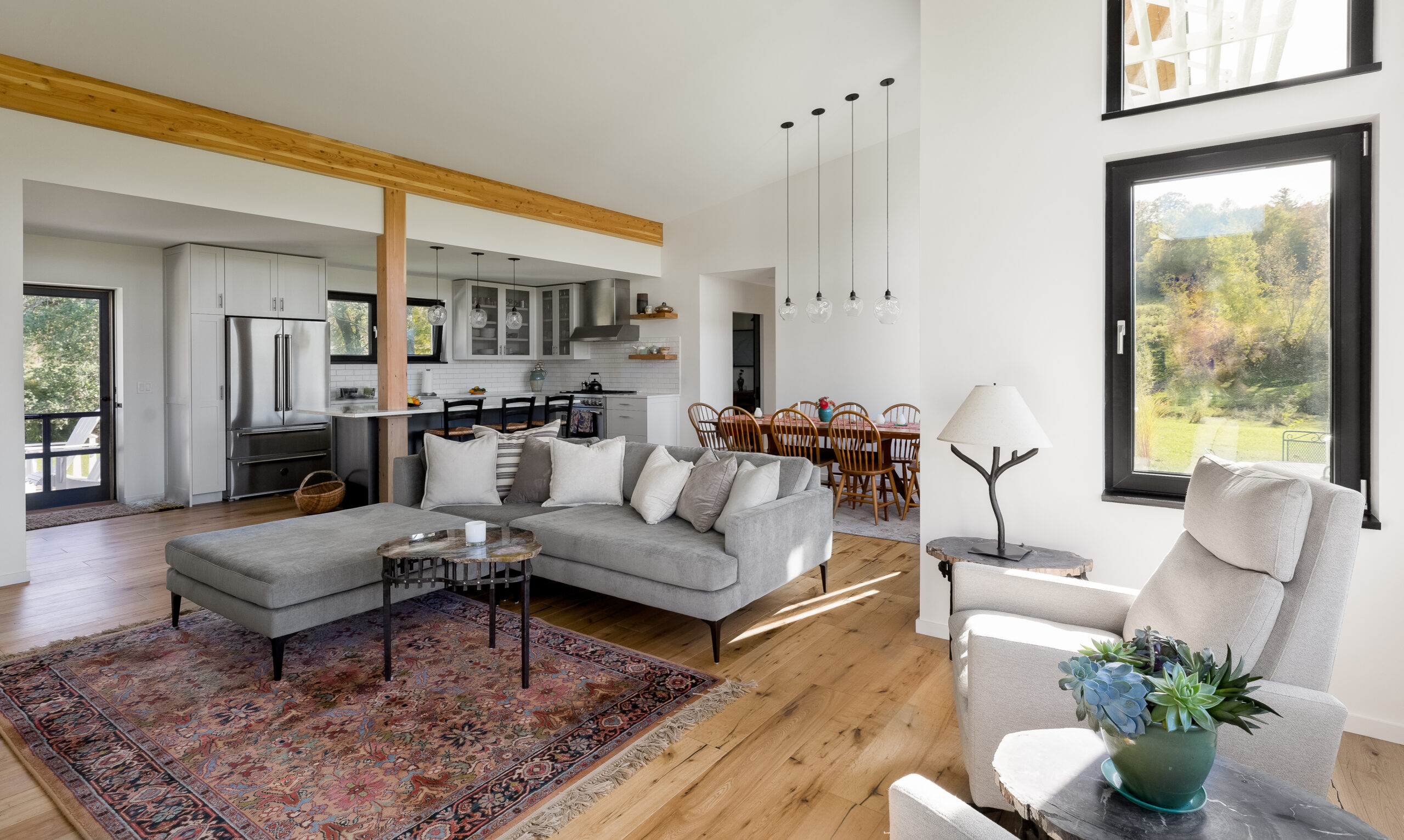
This Unity House has many of the aspects that make a small house feel larger than it is: an open floor plan, high ceilings, light-colored walls, excellent lighting, and lots of natural light coming in. Photo courtesy of Lindsay Raymondjack for Prefabulous for Everyone.
Open floor plans
Open up your floor plans for small houses. “Two homes with the exact same square footage can feel like completely different sizes, depending on their design,” explained Koones. Floor plans that combine the living room, dining room, and kitchen into one larger, open space can make a house seem much roomier.
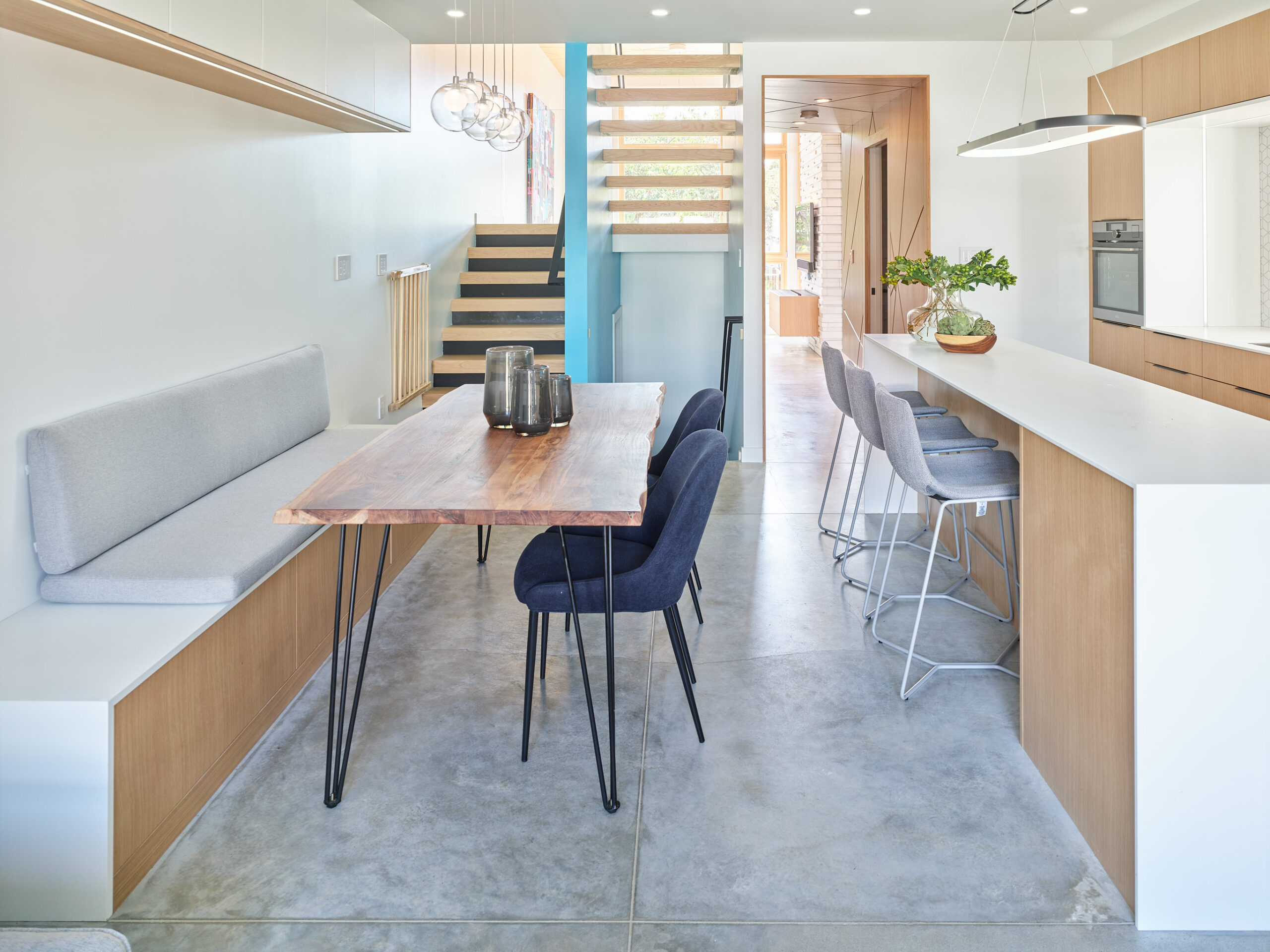
Open staircases allow light and air to flow, also making the area appear more spacious. This Certified Passive House was designed by Nick Bray Architecture. Photo courtesy of Martin Knowles.
Open up the stairs
Stairs are a necessary use of floor space in a multi-story home. Still, you can minimize their footprint by choosing an open staircase design. Light and air flow freely through the spaces above and below. Spiral staircases are especially ADU-friendly, as they occupy much less space than straight stairs.
Eliminate hallways
Hallways have little to no actual function, yet they still demand heating and cooling. “They’re a waste of space and energy,” Koones said. “Many smaller houses and ADUs are designed with limited or no hallways.”
Folding screens, room dividers with wheels, or curtains create separate, private spaces in open floor plans; then rest flat against the wall when not in use. Bookshelves and other furniture can act as a more permanent divider while offering added storage space. Finally, plants (real or fake), wall colors, area rugs, and decor themes can visually separate different spaces, while allowing air and light to flow through the home.
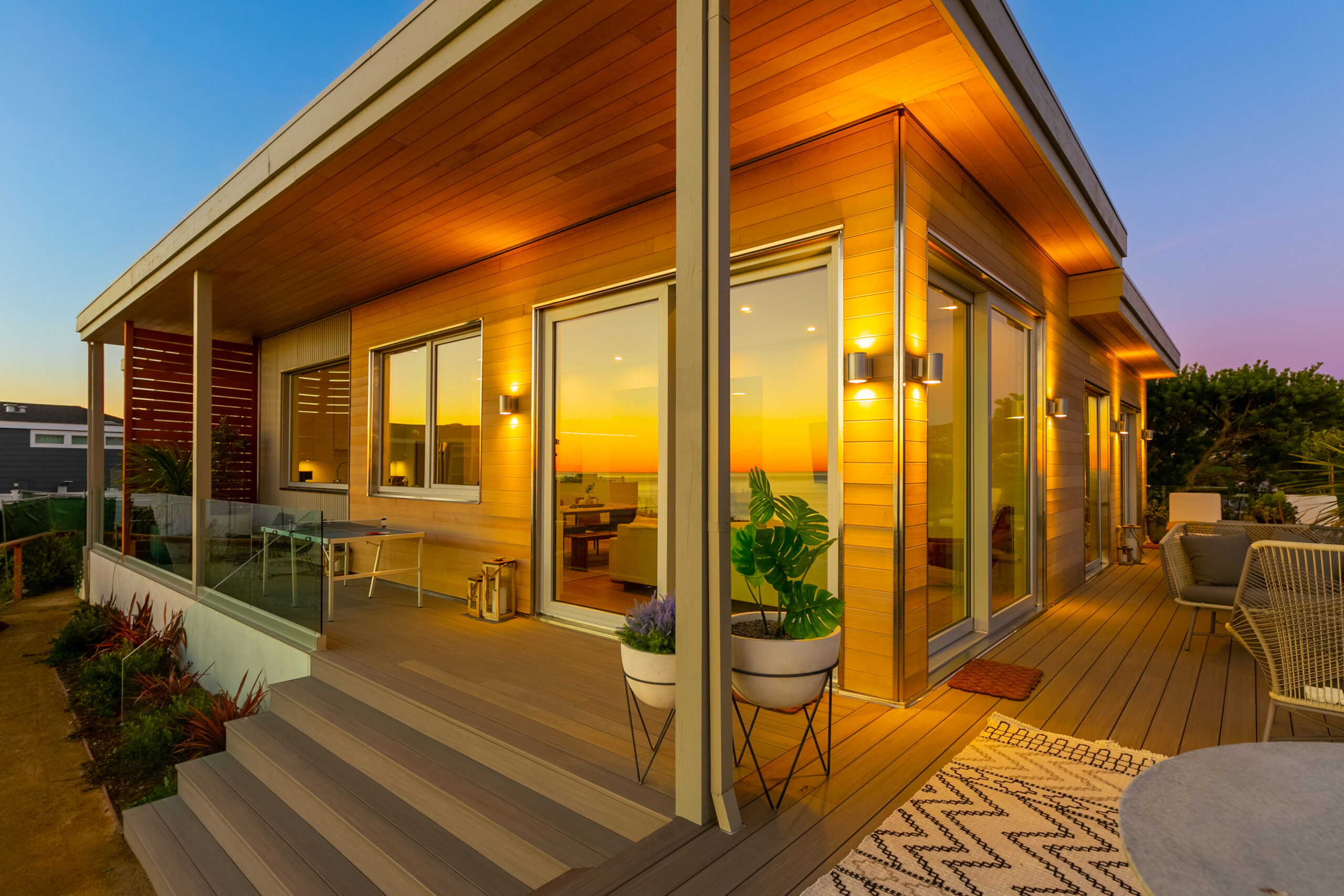
This 1800 sqft house by Dvele feels much larger than it is. Many windows and glass doors offer beautiful ocean views and abundant natural light and ventilation. Porches and decking add excellent outdoor living space. Photo courtesy of Reed Fish, Upmarket Media for Prefabulous Small Houses.
Design a great outdoor space
With the right design, an outdoor space can become an added living area to relax, entertain, and enjoy meals. You can use foliage and outdoor furniture to add privacy by sectioning off different parts of the yard. Porches, decks, and balconies are also wonderful for utilizing outdoor space. That indoor-outdoor feel promotes connection to the natural world surrounding your home.
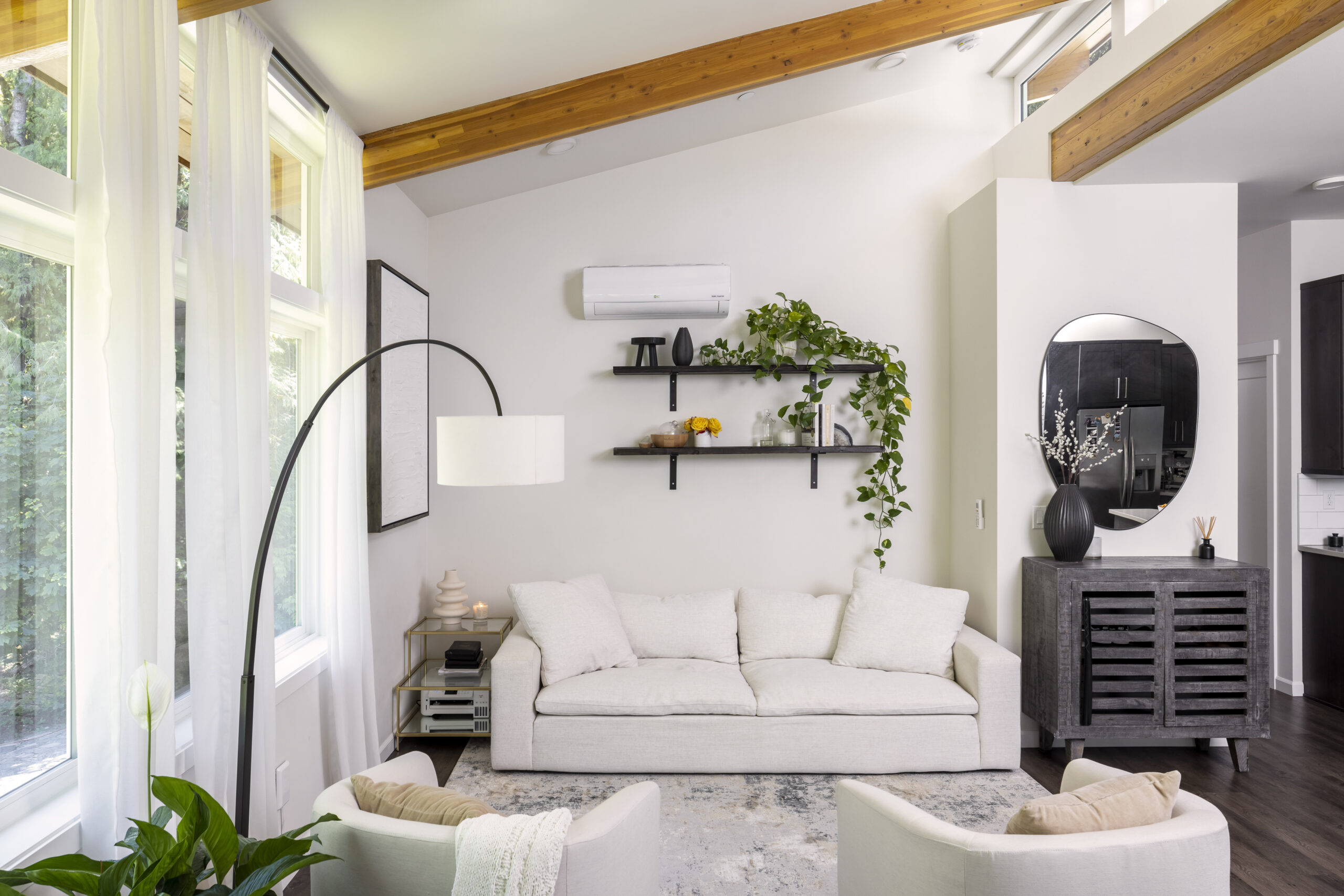
The high ceiling in this Lindal Cedar Homes ADU adds an airy feeling to a 984 SF space. Photo courtesy of Cindy Apple for Prefabulous for Everyone.
Raise the roof
“It’s generally cheaper to build up than to build out,” Koones said. “Raising the ceiling height by a couple of feet or so shouldn’t have a noticeable impact on energy efficiency. But it can really make a space feel bigger and more comfortable.” Tiny house plans with a loft will expand your possibilities for sleeping and storage.
Maximize natural light
The best small modern home plans maximize natural light and minimize heat gain. Determine the best window placement, and remember skylights and clerestory windows (i.e., windows above eye level). They let in light without taking up valuable wall space and are usually quite private.
The more windows you have, the bigger a room will look. Bonus tip: Paint your walls a light color to bounce light throughout the home, making it feel even more open and comfortable.
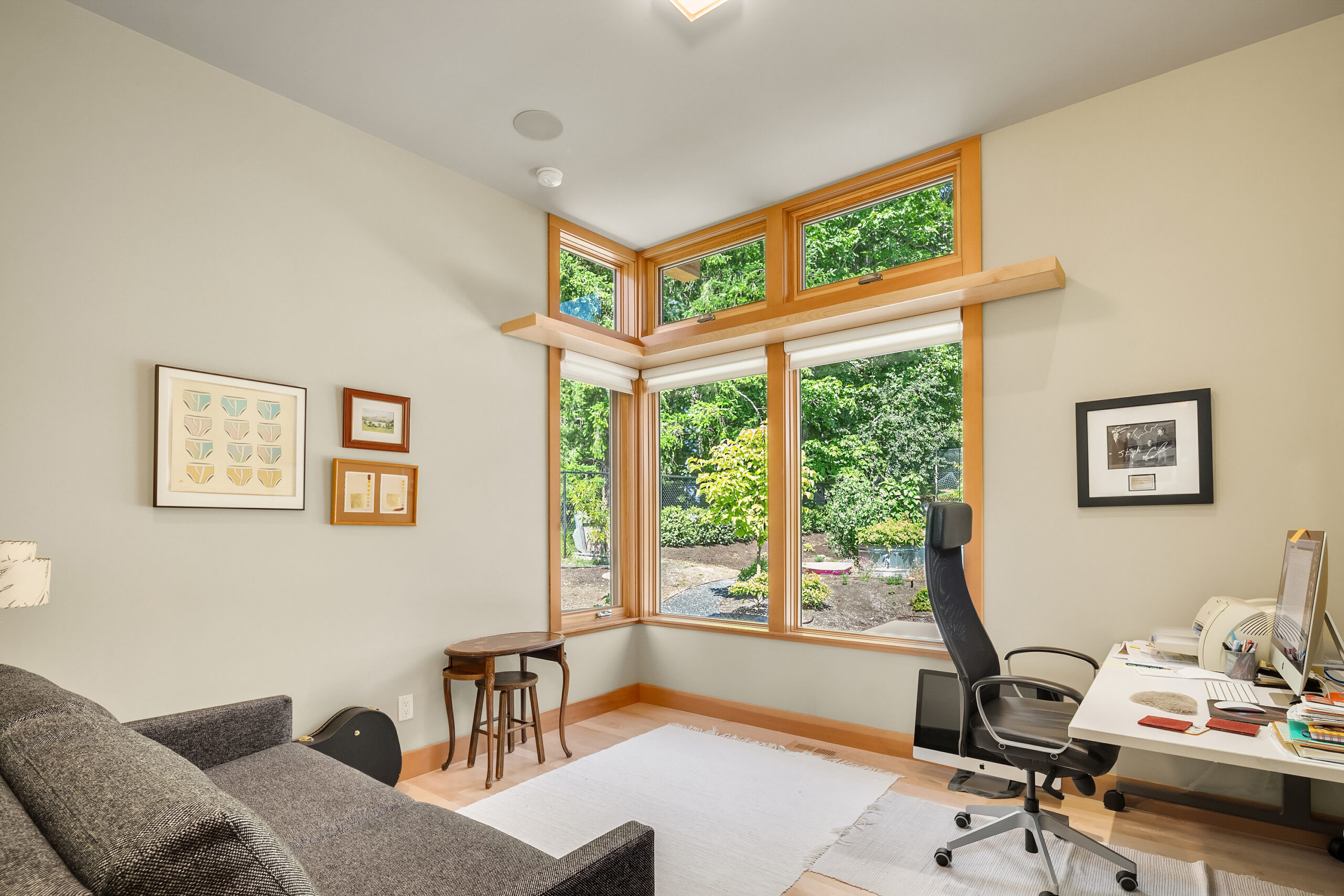
Multipurpose rooms are commonly used as guest bedrooms, craft rooms, and workspaces. This one was built with a panelized system by Stillwater Dwellings. Photo courtesy TJ Simon for Bigger Than Tiny, Smaller Than Average.
Create multipurpose spaces
In designing tiny home floor plans, every part of the house should see regular use. “Any room that’s only used for special occasions, like a guest room, is a waste of valuable space,” Koones said. “Instead, you can use that room as an office or hobby room in your day-to-day life and convert it to a guest room when you have people staying over.”
Explore built-ins
Built-in nooks and furniture can be a great space-saving technique for your small home or ADU. Customize built-in cabinets, closets, and open storage cubbies to the exact dimensions of your home. Take advantage of every square inch!
A built-in niche is a great tiny home office idea, tucked away from the bedroom or living areas. For added privacy, try installing a curtain to section off the work nook as needed.
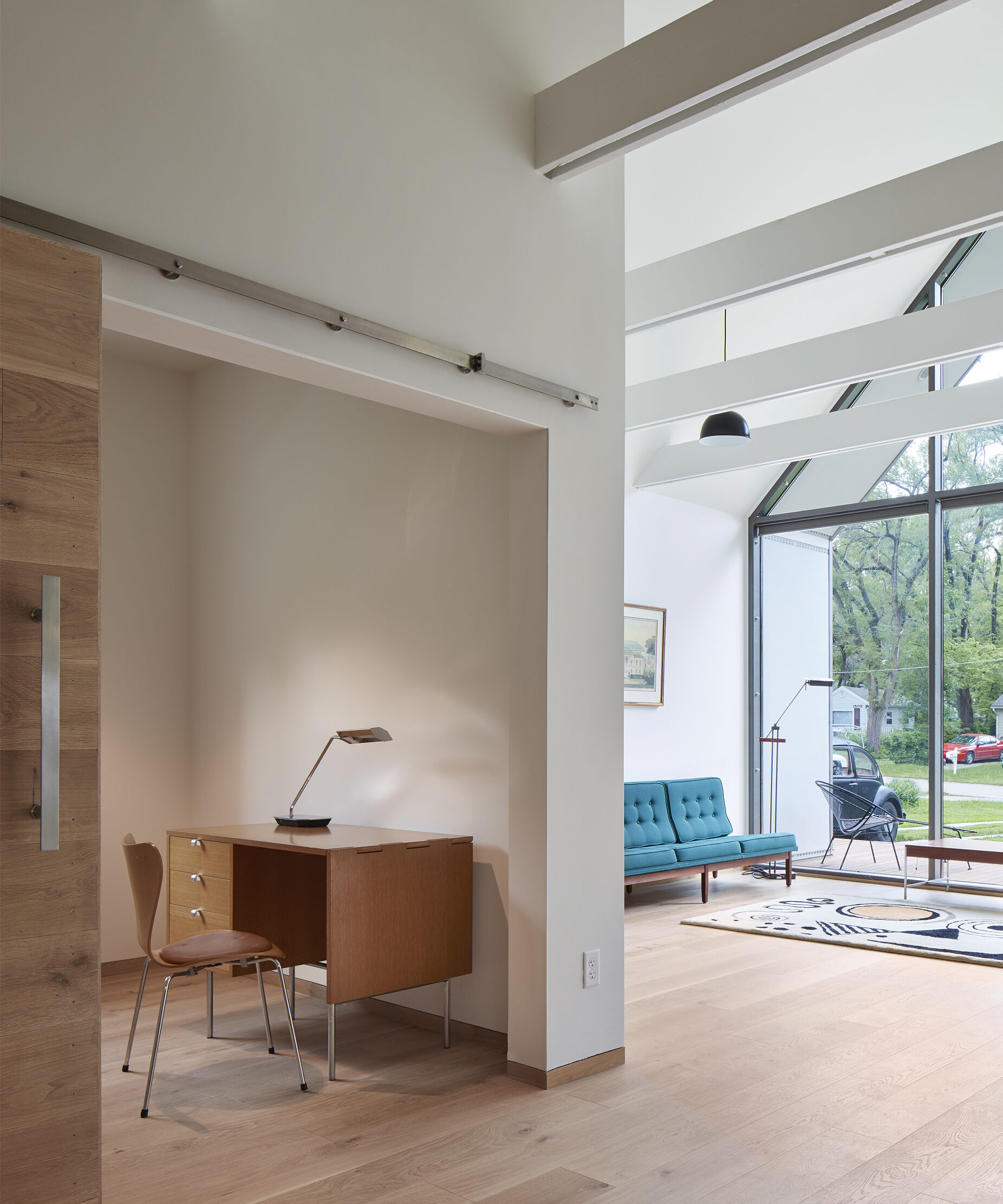
A barn door cleverly opens to a flex or multipurpose room in this smal l965 sqft house by architect Dan Rockhill and his students. Photo courtesy Gaffer Photography for Bigger Than Tiny, Smaller Than Average.
Install barn or pocket doors
Traditional hinged doors waste space, because you have to keep a clear path for the door to swing open and shut.
Sliding barn or pocket doors give you the same level of accessibility and privacy. And they occupy far less room in a small house floor plan. Larger barn doors or double pocket doors can add flexibility to an open floor plan, sectioning off part of the space as needed.
Promote ventilation
Natural ventilation can cut heating and cooling costs. Plus it keeps smaller rooms from feeling (and smelling) stuffy.
Increase the natural airflow in your home with windows or sliding glass doors. In small modern home plans, designs may include glass walls that open accordion style. This visually extends the living space far beyond the walls of your house.
Pay close attention to tight insulation and air filters in the design phase. Ceiling fans, especially in tiny house plans with a loft, are great for promoting ventilation and saving energy.
A barn door cleverly opens to a flex or multipurpose room in this smal l965 sqft house by architect Dan Rockhill and his students. Photo courtesy Gaffer Photography for Bigger Than Tiny, Smaller Than Average.
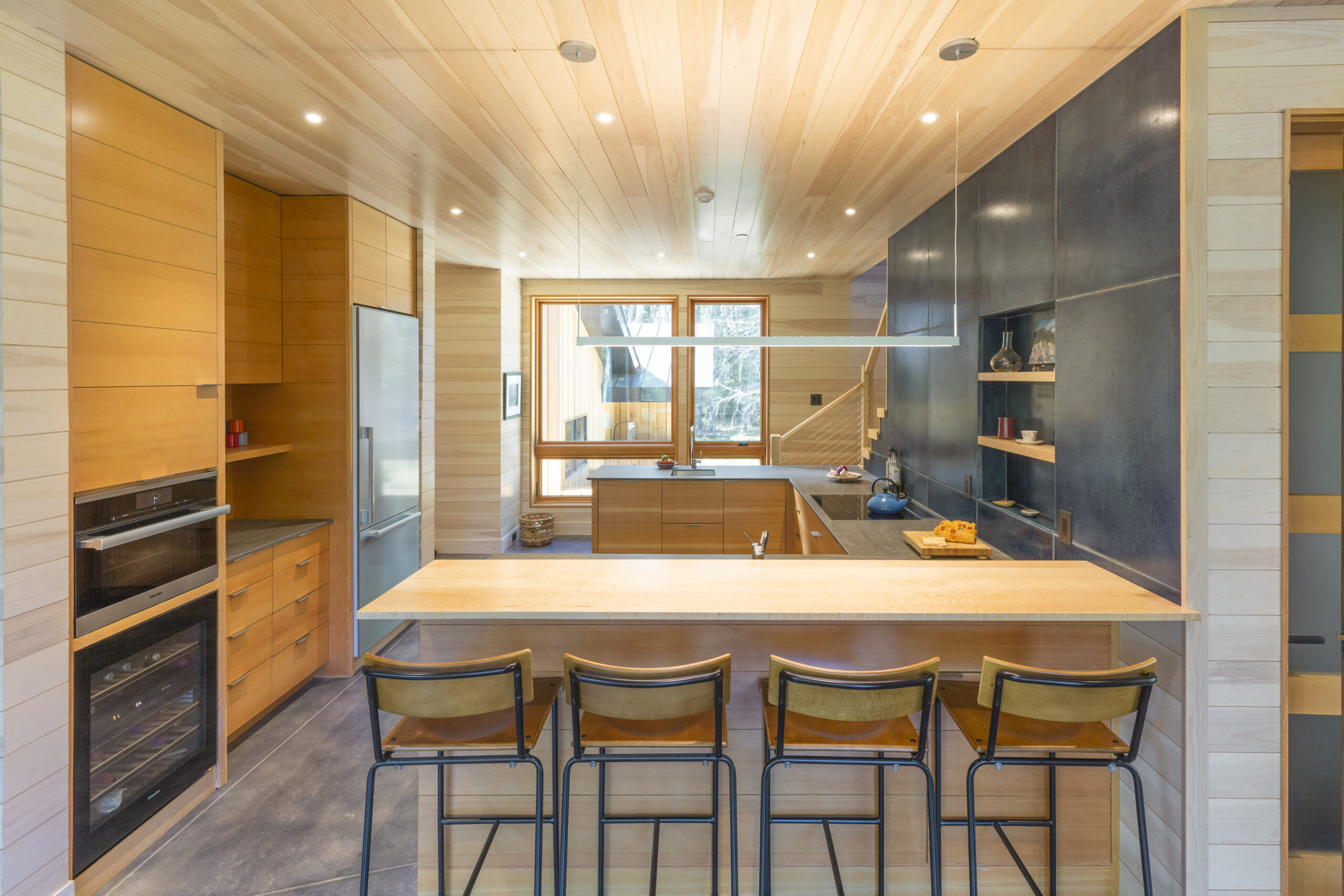
Plenty of storage in this small kitchen keeps the area very neat, with a place for everything—essential in a small home. Design by architect Chris Herlihu with Polestar Design. Photo courtesy Adam Powers for Prefabulous for Everyone.
Prioritize storage
“Start planning your storage in the building and design phase,” recommended Koones. “Having a lot of stuff lying around can make a home feel small and cluttered. So it’s important to consider where you’ll put everything. Make sure you have enough cabinetry in the kitchen, bedrooms, and even bathrooms.”
Look for added storage potential in every corner of your home: from built-in cabinets and closets to ready-to-assemble shelving and furniture. For example, opt for a bathroom sink with a built-in cabinet rather than a pedestal sink without storage.
Ample storage in this small kitchen keeps the area neat, with a place for everything—essential in a small home. Design by architect Chris Herlihu with Polestar Design. Photo courtesy Adam Powers for Prefabulous for Everyone.
Get creative with fixtures and furnishings
Inside tiny houses, out-of-the-box thinking can go a long way in making a small home feel larger. Koones recalled some of the most creative space-saving concepts she discovered:
- A cleverly placed TV stand that can be angled in different directions for viewing from the bedroom and living room
- Kitchen shelving with an integrated drying rack that drains into the kitchen sink below
- Space-saving hanging toilets with tanks hidden in the walls
- Barrier-free showers that allow continuous flooring in the bathroom to make the space seem larger
Choose multi-function furniture
Why buy two separate pieces of furniture when one will do the trick? In her research on inexpensive small house designs, Koones has come across many attractive multi-function furniture concepts:
- Fold-out sleeper couches and armchairs double as guest beds
- Coffee tables open up to reveal hidden storage
- Folding furniture to be used both indoors and outdoors
- Night tables with storage drawers
- Compact ladder desks with built-in shelving above the desk
- Drop-leaf kitchen tables and tables that fold down from the wall
- Murphy beds that fold against the wall or inside a cabinet when not in use (some provide a retractable table or desk when not in use)
- Folding kitchen chairs that can be hung on the wall when not in use
Downsize appliances
Living smaller doesn’t have to mean giving up your favorite appliances. “In my new book, I feature an ADU that’s about 300 square feet but still has a full kitchen. They just have smaller appliances,” said Koones.
“You can absolutely downsize and still have everything you need. It’s just a matter of having appropriately sized items in the house, so they’re not overwhelming.”
More appliance manufacturers are jumping on board, creating beautiful, high-performance appliances designed to fit smaller kitchens. Compact appliance options include:
- Single-shelf ovens
- Stacked washer-dryer sets
- Two-burner stoves
- Compact refrigerators
- Single-shelf dishwashers
Dual-purpose appliances, like all-in-one washer-dryers or combo microwave–convection ovens, are also great space savers.
The author:
Catherine Poslusny is a freelance writer and content marketing specialist based out of Norman, OK. You can find her at catherinerosewrites.com.
Our team researches products, companies, studies, and techniques to bring the best of green building to you. Elemental Green does not independently verify the accuracy of all claims regarding featured products, manufacturers, or linked articles. Additionally, product and brand mentions on Elemental Green do not imply endorsement or sponsorship unless specified otherwise.

Author, journalist, and popular speaker, Sheri Koones inspires readers with ecologically responsible ways to get the house of their dreams. Her latest book, ADUs: The Perfect Housing Solution, goes inside small houses. Twenty-five charming, ultra-functional tiny home floor plans will inspire you to live small and live well.
Her previous books include Bigger Than Tiny, Smaller Than Average, Prefabulous for Everyone, and Downsize: Living Large in a Small House.
We are a participant in the Amazon Services LLC Associates Program, an affiliate advertising program designed to provide a means for us to earn fees, at no additional cost to you, by linking to Amazon.com and affiliated sites.



